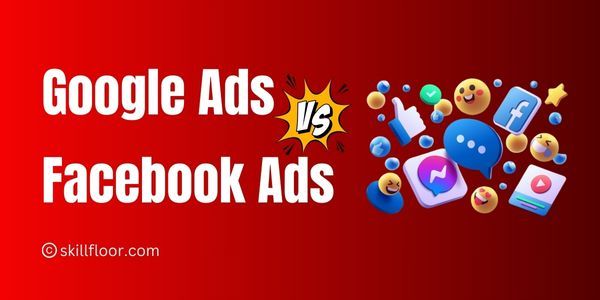How to Build an Online Website Marketing Strategy
Learn how to build an effective online marketing strategy for your website with key steps to drive traffic, engage audiences, and boost sales.

Today, having a strong online presence is important for any business. A good website is just the beginning. However, having a website alone isn’t enough; a solid marketing plan is needed to support it. As a digital marketing expert, I've seen that businesses without a clear plan often have difficulty attracting visitors and making sales. So,
how can we create an online marketing strategy that drives traffic and connects with our audience?
Finding Focus in Marketing Strategies
The digital marketing world can be quite confusing. There are so many tools, platforms, and techniques that it’s easy for businesses to feel overwhelmed. I’ve seen companies spend a lot of money on social media, SEO, or pay-per-click ads, but without a clear plan, those efforts often lead to disappointing results. Plus, consumer behavior keeps changing, so businesses need to adapt their strategies quickly. With so many options available, getting lost and overlooking what matters for your brand is easy. This can waste resources and lead to missed opportunities.
What Is Website Marketing?
Website marketing refers to the different strategies and techniques businesses use to promote their websites and attract visitors. This can include things like Search Engine Optimization (SEO), content marketing, social media marketing, email marketing, and online advertising. The goal of website marketing is to increase visibility, drive traffic to the website, engage visitors, and ultimately convert them into customers.
In my experience, effective website marketing is about understanding your audience, delivering valuable content, and using data to guide your decisions. It’s about creating a seamless experience that encourages visitors to explore your offerings, whether that means reading a blog post, signing up for a newsletter, or making a purchase.
Why Website Marketing Is Important
Website marketing is crucial for several reasons:
-
Reach a Wider Audience: More people are using the internet to find products and services. A strong online presence allows you to connect with potential customers who might not otherwise discover your brand.
-
Build Trust: When your website appears in search engine results and social media feeds, it signals to users that your business is legitimate and worth their attention. A good marketing strategy enhances brand awareness and fosters customer loyalty.
-
Measure Results: With tools like Google Analytics, you can track visitor behavior, assess the effectiveness of different marketing channels, and make data-driven decisions to improve your strategy over time. This adaptability ensures that you can continuously refine your approach to meet the needs of your audience and achieve your business goals.
How can we create a website marketing strategy that meets our goals and targets our audience?
Based on what I've learned over the years, I’ve broken down the process of building an online website marketing strategy into several key steps. Following these steps will help create a clear plan that guides our marketing efforts, allowing us to engage our audience, convert leads, and reach our business goals. Here’s how to do it:
Step 1: Define Your Goals
Before jumping into the details of online marketing, the first step is to clearly define your goals. What do you want to achieve with your online presence? Your goals might include:
-
Increasing website traffic
-
Generating leads
-
Boosting sales
-
Enhancing brand awareness
-
Improving customer engagement
I always encourage businesses to use the SMART criteria when setting their goals: Specific, Measurable, Achievable, Relevant, and Time-bound. For example, instead of saying you want to "increase website traffic," you could say you want to "increase organic website traffic by 30% over the next six months." This kind of clarity will guide your strategy and help you measure success.
Step 2: Understand Your Target Audience
Once you have your goals set, the next step is to understand your target audience. Who are they? What are their pain points, interests, and online habits? Doing thorough market research is crucial. I recommend using tools like Google Analytics, social media insights, and surveys to gather data about your audience.
Creating detailed buyer personas can help you picture your ideal customers. These personas should include demographic information, online behavior, and preferences. Knowing your audience allows you to tailor your messaging so it resonates with them.
Step 3: Analyze Your Competitors
It's important to understand what your competitors are doing. What are they doing well? Where are they falling short? Tools like SEMrush and Ahrefs can give you insights into your competitors' strategies, including their keyword rankings and backlink profiles.
I always recommend doing a SWOT analysis (Strengths, Weaknesses, Opportunities, Threats) for your competitors. This will help you spot gaps in the market and opportunities for differentiation. By learning what works for others, you can avoid their mistakes and adopt successful tactics in your strategy.
Step 4: Choose the Right Marketing Channels
With a clear understanding of your goals, audience, and competitors, it’s time to choose the right marketing channels. The digital world is vast, with options like:
-
Search Engine Optimization (SEO)
-
Content Marketing
-
Social Media Marketing
-
Email Marketing
-
Pay-Per-Click (PPC) Advertising
Each channel has its strengths and weaknesses, so it's essential to select those that align with your goals and audience preferences. For example, if your target audience is active on social media, you might want to invest more in social media marketing. Conversely, if your goal is to increase organic traffic, focusing on SEO and content marketing might be more effective.
Step 5: Develop a Content Strategy
Content is at the heart of any online marketing strategy. It attracts visitors, engages them, and encourages them to take action. From my experience, creating a comprehensive content strategy is essential. Here’s how to do it:
-
Content Types: Identify the types of content that resonate with your audience. This could include blog posts, videos, infographics, podcasts, and more.
-
Content Calendar: Plan and organize your content with a content calendar. This ensures consistency and helps you stick to your publishing schedule.
-
SEO Optimization: Ensure your content is optimized for search engines. This involves keyword research, using appropriate meta tags, and incorporating internal and external links.
-
Call-to-Action (CTA): Every piece of content should have a clear call-to-action. Whether it’s signing up for a newsletter, downloading a resource, or making a purchase, CTAs guide your audience to the next step.

Step 6: Implement and Optimize SEO
Search Engine Optimization (SEO) is fundamental for driving organic traffic to your website. A strong SEO strategy involves both on-page and off-page optimization. Here are some key elements to focus on:
-
Keyword Research: Identify relevant keywords that your target audience is searching for. Tools like Google Keyword Planner and Moz can help you find high-traffic, low-competition keywords.
-
On-Page SEO: Optimize your website’s structure, URLs, and content to align with SEO best practices. Focus on title tags, meta descriptions, header tags, and image alt texts.
-
Off-Page SEO: Build a strong backlink profile by earning links from reputable websites in your industry. Guest blogging, collaborations, and influencer partnerships can help you gain valuable backlinks.
Step 7: Leverage Social Media
Social media platforms are powerful tools for engaging with your audience and promoting your content. Here are a few strategies to maximize your social media efforts:
-
Platform Selection: Focus on the platforms where your audience is most active. For instance, B2B companies might prioritize LinkedIn, while B2C brands may find more success on Instagram or TikTok.
-
Content Sharing: Share your blog posts, videos, and other content across your social media channels. Use eye-catching visuals and compelling captions to drive engagement.
-
Engagement: Actively engage with your audience by responding to comments, participating in discussions, and asking questions. This builds community and fosters loyalty.
Step 8: Utilize Email Marketing
Email marketing remains one of the most effective channels for reaching your audience directly. Here’s how to use it effectively:
-
Build Your List: Use lead magnets like eBooks, webinars, or exclusive discounts to encourage visitors to subscribe to your email list.
-
Segment Your Audience: Divide your email list based on demographics, interests, or behavior. This allows you to send targeted messages that resonate with different audience segments.
-
Craft Compelling Campaigns: Create engaging email campaigns that provide value to your subscribers. This could include newsletters, promotional offers, or personalized recommendations.
Step 9: Monitor and Analyze Performance
Once your strategy is in place, it’s essential to monitor its performance continuously. Use analytics tools like Google Analytics, social media insights, and email marketing metrics to track key performance indicators (KPIs) related to your goals.
Regularly review your website traffic, conversion rates, and engagement metrics. Analyze what’s working and what’s not. This data-driven approach allows you to make informed decisions and optimize your strategy over time.
Step 10: Adapt and Evolve
The digital world is always changing, and so are consumer behaviors. To stay competitive, it’s essential to be flexible. Regularly revisit your goals and strategies to ensure they align with market trends and audience needs.
I recommend conducting quarterly reviews to assess how well your strategy is working. This helps you adjust your approach when necessary and take advantage of new opportunities as they come up.
Building an effective online website marketing strategy requires a thoughtful, systematic approach. By defining your goals, understanding your audience, analyzing competitors, selecting the right channels, and continuously optimizing your efforts, you can create a strategy that drives traffic, engages users, and achieves your business objectives.
Remember, it’s a journey, not a destination. Stay curious, keep learning, and be willing to adapt. With the right strategy in place, your online presence can become a powerful tool for growth and success.
By following these steps, I’ve seen many businesses transform their online marketing efforts, and I’m confident that you can achieve the same. Embrace the process, stay committed, and watch as your online website marketing strategy takes your brand to new heights.




























































